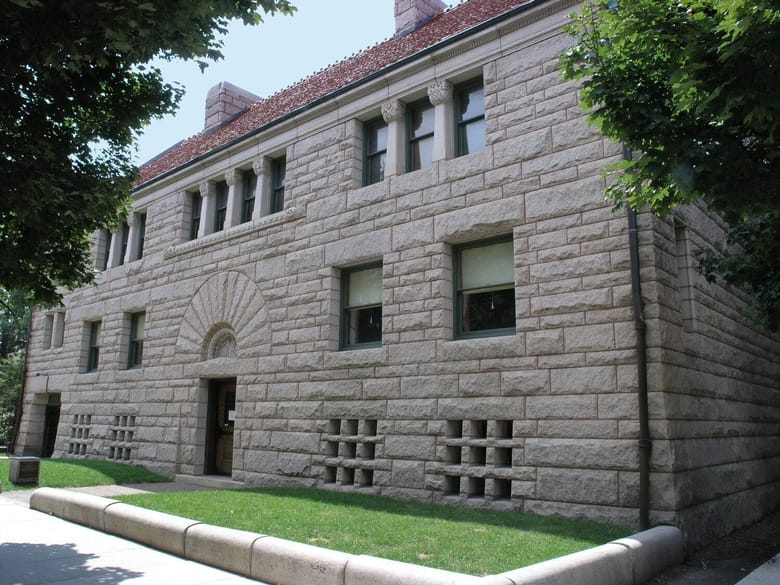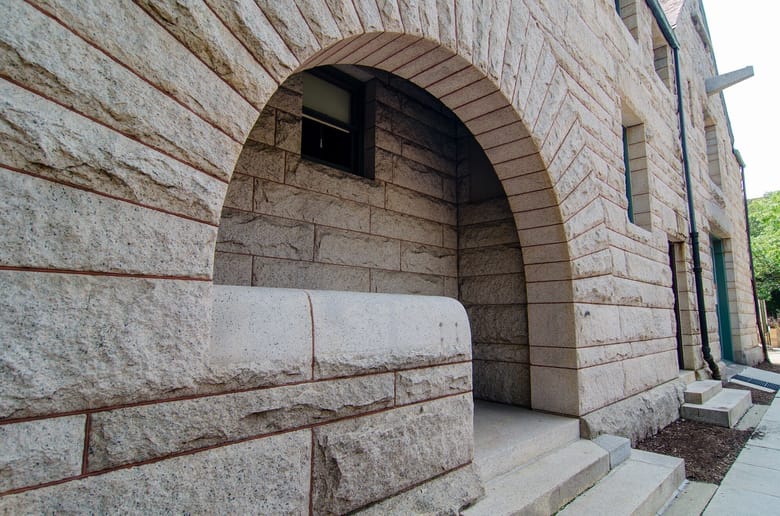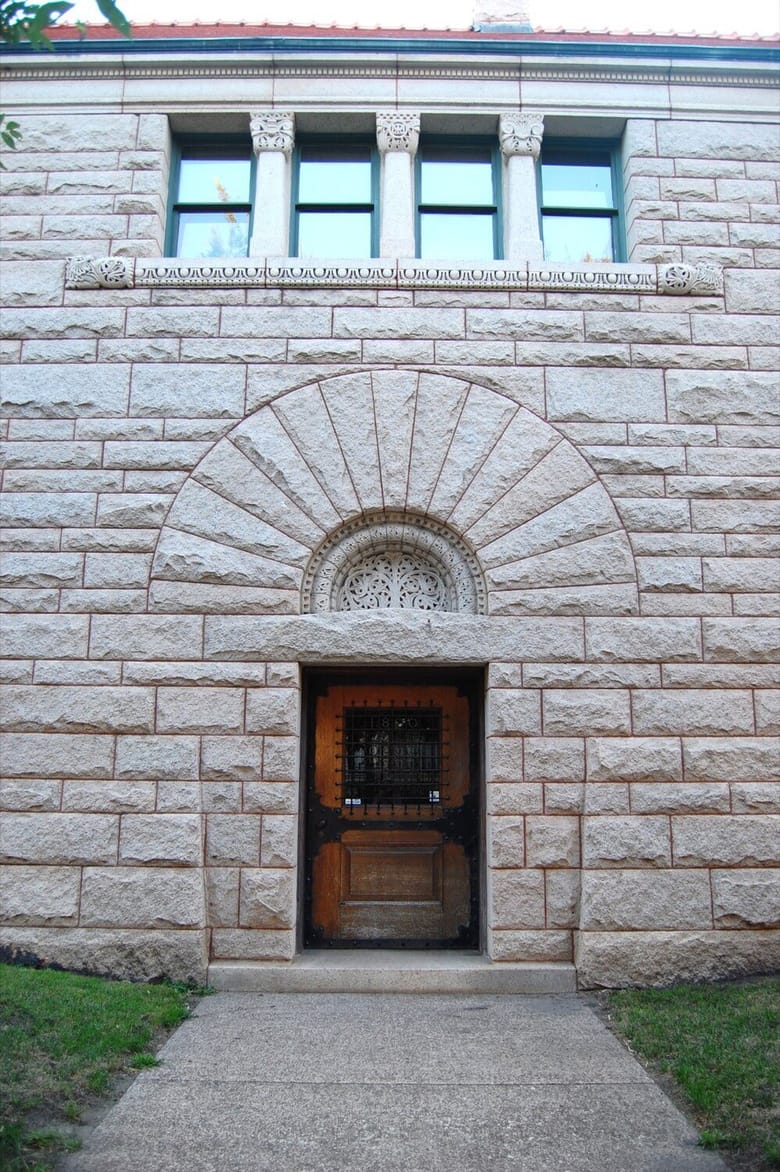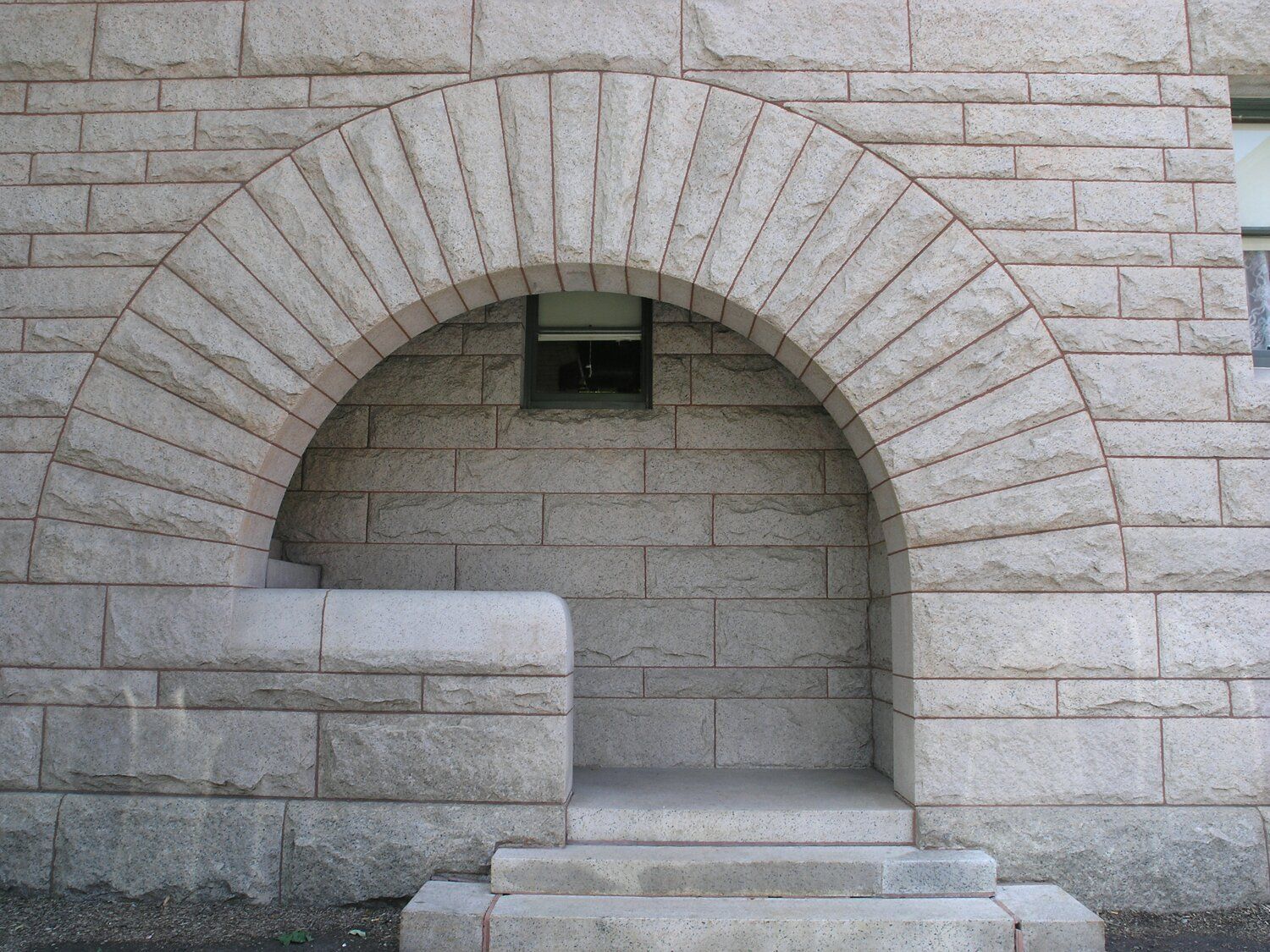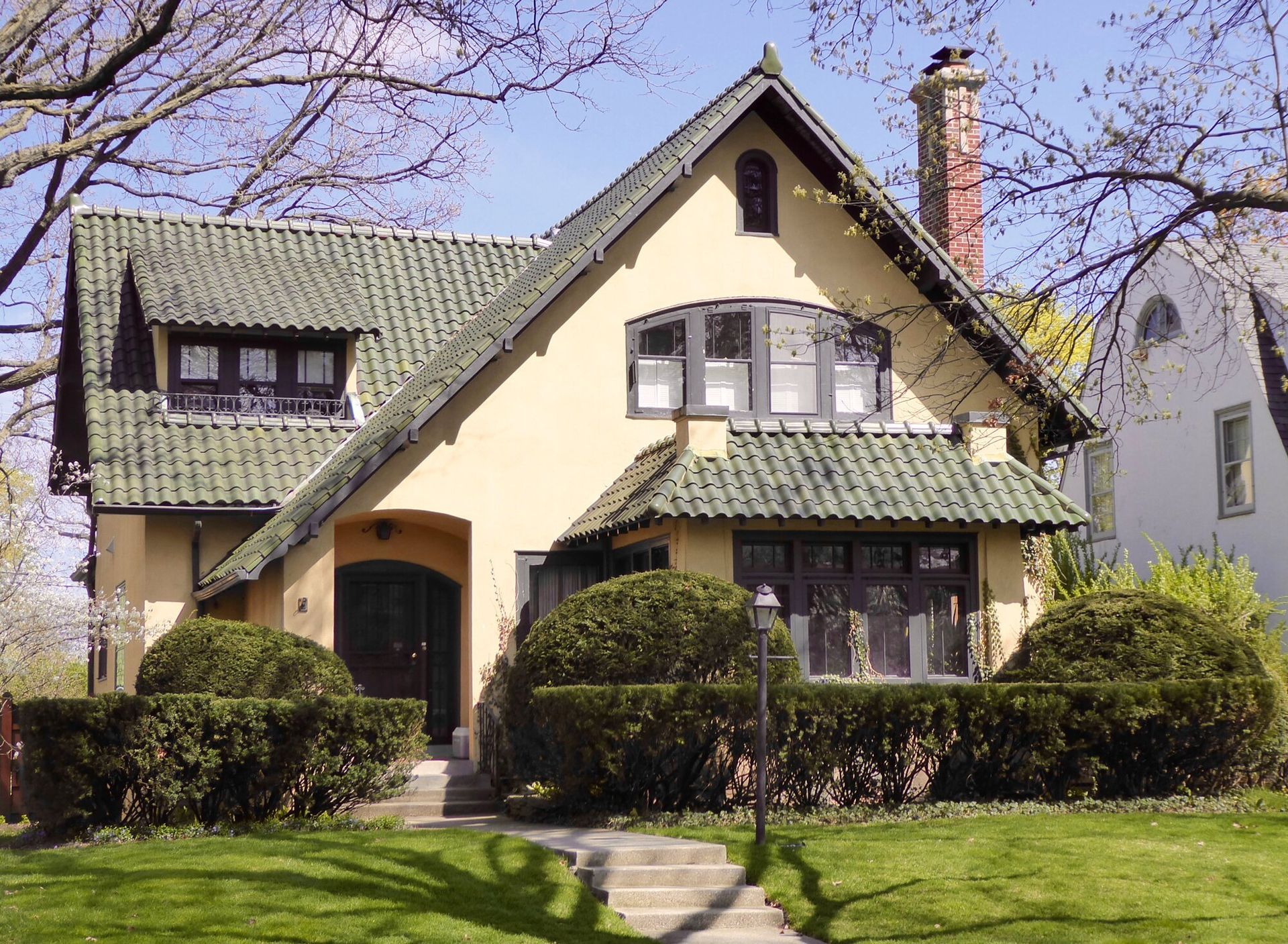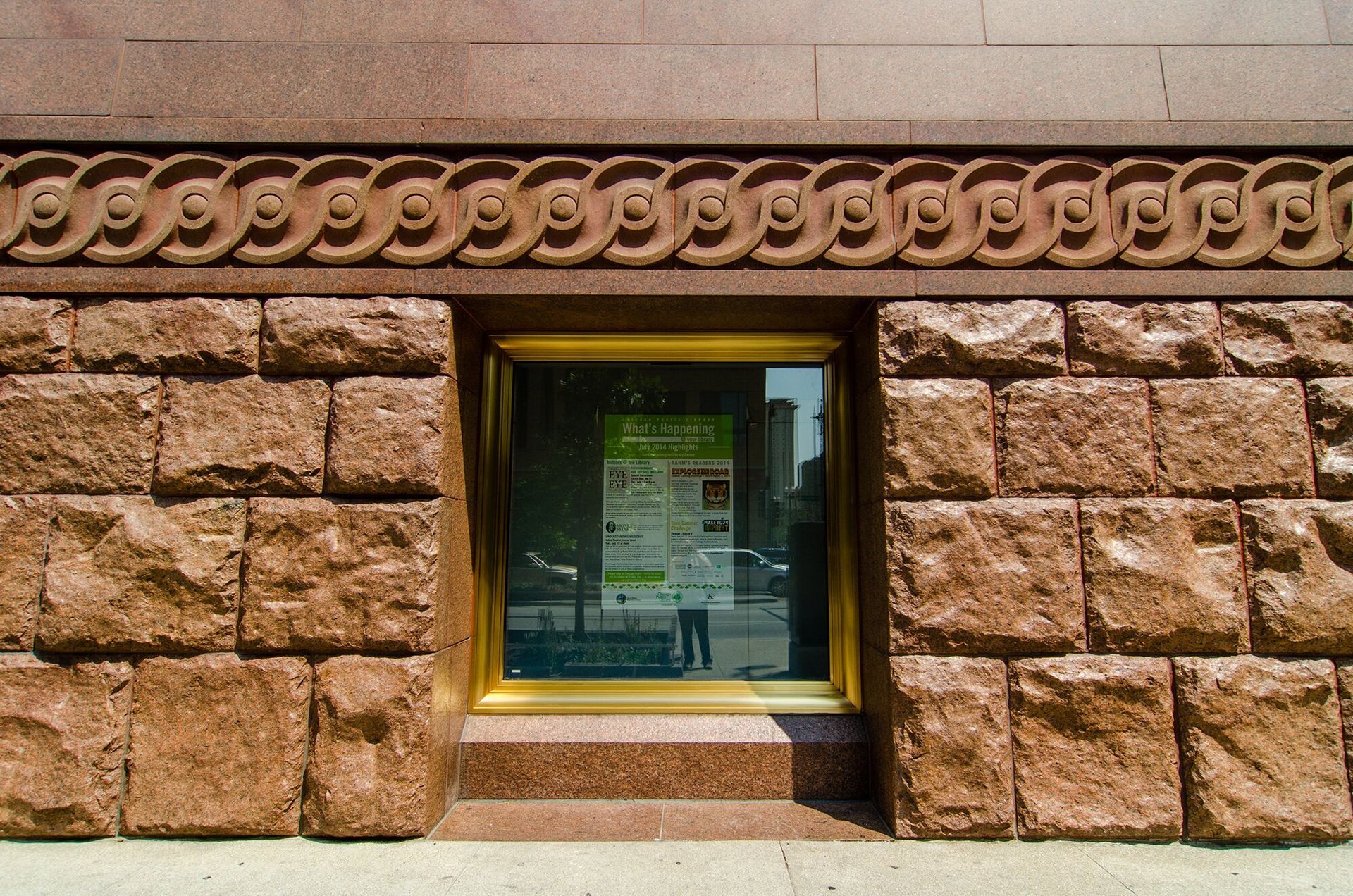Its mighty walls guard the storied past of a legendary neighborhood. The Richardsonian Romanesque mansion is unique inside and out. The rough-hewn stones of its exterior conceal a surprisingly warm and innovative interior, and its design perfectly reflects the needs of the Glessner family.
GILDED AGE FORTRESS
Henry Hobson Richardson designed Glessner House in his namesake style, characterized by rusticated granite walls and large Romanesque arches surrounding both front and side entrances. Otherwise, the house has very little ornament. Its fortress-like plan opens mostlya inward rather than outward. Richardson claimed it was his favorite design of all his houses.
Some believe that Richardson designed the Glessner House as a fortress to offer protection to its inhabitants against the growing unrest of the lower classes during America’s turbulent Gilded Age. However, Richardson died on April 26, 1886, and all of the essential structure had been designed by 1885. The Haymarket event, which occurred on May 4, 1886 couldn’t possibly have been inspiration for the home’s fortress-like design.
Richardson was actually inspired, in part, by a photograph of outbuildings at Abingdon Abbey he noticed in the Glessners’ home on an early visit. He is said to have sketched out the basic design almost immediately. The interior courtyard was a stylistic choice that bucked current trends.
That stylistic choice came at a cost, however. Today we’d say that some believed the house lacked curb appeal. Gilded Age architecture was expected to express wealth and power through a limited array of bombastic styles. That was a norm this design flouted. More than a few of the Glessner’s prominent neighbors considered the home’s design an affront to their tastes.
But not all of the Glessner’s neighbors disliked the design. According to Mrs. Glessner’s diary, a Miss Montague said, “I never saw so splendid a house.” And Dr. Adams claimed, “I like it exceedingly.”
ALL THE COMFORTS OF HOME
Richardson worked closely with the Glessners to design a house that would offer them the best in creature comforts. This effort began with the site plan. Since it served as the Glessners' winter home—the family spent summers in New Hampshire—designing for maximum warmth was a must. The U-shaped house opens to maximum sunlight from the south and leaves largely blank stone walls to block the cold winds from the north.
In stark contrast to the home’s exterior, the family’s living spaces are cozy and inviting. Rooms decked out in the warm wood tones of the Arts and Crafts style flow together with an informal fluidity that’s ahead of its time. No detail was above careful consideration.
A LANDMARK OF ARCHITECTURAL PRESERVATION AND EDUCATION
Many of the original Prairie Avenue mansions have been lost over time due to neglect and destruction in favor of reconstruction. In 1966, a group of architects and concerned citizens decided to take a stand to save Glessner House from a similar fate. It was a foundational moment for the historic preservation movement in Chicago. Thanks to their efforts, Glessner House is preserved as an excellently appointed museum that allows the public to learn about the history and architecture of the Gilded Age in Chicago. Their impulse to educate the public expanded when that same group became the founders of the Chicago Architecture Foundation. Since 1995, the Glessner House and CAF—each in their own way—continue to fulfill aspects of the original mission.
Did you know?
The Glessners’ office contains a massive shared desk with his and her sides.
Did you know?
The Chicago Architecture Foundation managed the Glessner House Museum until 1994.
Did you know?
CAF’s logo incorporated a stylized version of the arched northern entry to Glessner House until 2002.
Did you know?
The north side of the house is lined with a corridor of servants’ quarters, further shielding the family’s living spaces from chill winds.
